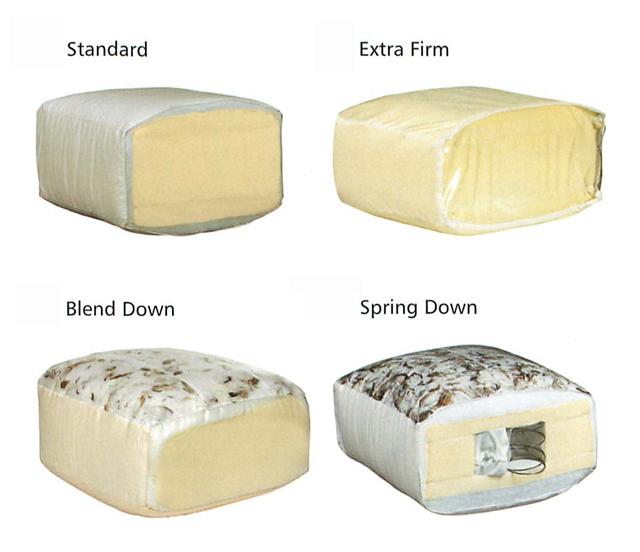BRING YOUR OLD SOFA BACK TO LIFE WITH NEW CUSHION INNERS
SAVING A SAGGY SOFA?
- My year old Sofa is starting to show it's age, the cushions started sagging. I was thinking about replacing the foam inside...........
- I purchased sectional about a year and a half age. It's been a pretty good couch so far with one exception; the back pillows now get deformed fairly easily. The part that gets sat at the most now won't even re-fluff into a flat form again. The company has a 1-year warranty, but sadly since we bought it two summers ago it doesn't qualify anymore.......
FURNITURE SEAT CUSHIONS
Types of Foam in Couches
By Melody Hughes, eHow Contributor
When choosing a sofa, consider the entire construction of the sofa to select a long-lasting sofa that is worth the money you pay for it. The types of cushion filling is one of the most important factors to consider when choosing a sofa. Choose a cushion that is firm yet soft and one that will retain its shape over several years.
Polyurethane
Foam couch cushions are made out of polyurethane, which is both durable and affordable. Polyurethane is available in various densities and will vary in its durability and comfort depending on the quality of the foam.
High-Resilient Foam
Good Housekeeping recommends choosing a high-resilient (HR) polyurethane foam, which is both durable and comfortable, although more expensive. Couches with this type foam should have labeling that indicates the presence of HR foam. This type of polyurethane foam is designed specifically for longevity.
Combinations with Other Materials
Foam cushions are usually padded with either another layer of polyurethane, cotton batting, or a polyester fiber filling. For those that prefer a firmer and more quality cushion, Dr. Leona Hawks of the Utah State University Cooperative Extension suggests choosing a sofa with high-resilient foam padded with a layer of down feathers or one with polyester batting surrounding a polyurethane foam base.
Foam Density
When choosing a sofa or couch, inquire about the foam's density. High-density polyurethane will last longer, but it is also harder feeling. Alternately, while low-density foam is softer to the touch, it will not last as long. A foam's density indicates how much foam is used per cubic foot. Those with lower densities have more filler materials and air within the foam. Linda Reese Adler, writing from the University of Kentucky's Cooperative Extension Service, recommends choosing a foam with a density of at least 1.8 pounds per cubic foot.
Resources
Colorada State; Selecting Upholstered Furniture; K. R. Tremblay, Jr. and K. Williams; 2007.





